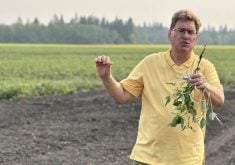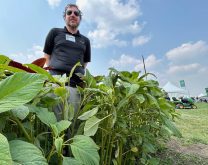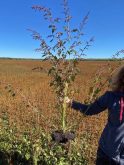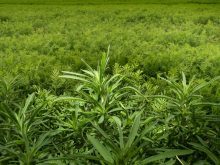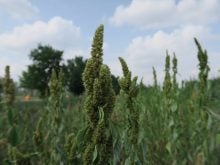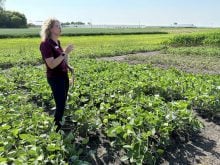No one wants Palmer amaranth or waterhemp to become bigger weed worries than they already are in Manitoba, and there’s work currently focused on making sure that doesn’t happen, but locally based knowlege is still thin on the ground.
The two boogeymen of the weed realm were recently the subject of a successful resolution brought before the Keystone Agricultural Producers.
The motion, brought forward at a KAP spring advisory meeting this March by ag diploma students from the University of Manitoba, would have the farm group lobby the provincial government for more supports into control strategies for the two noxious weeds.
Read Also

Huge Black Sea flax crop to provide stiff competition
Russia and Kazakhstan harvested huge flax crops and will be providing stiff competition in China and the EU.
Both members of the pigweed family, Palmer amaranth and waterhemp have been the villains of weed horror stories in the U.S., thanks to their prolific seed production, yield damage and propensity for herbicide resistance.
Palmer amaranth has only been found twice in Manitoba, both in the RM of Dufferin. Waterhemp has dug out a wider footprint. As of 2023, the province reported it in 19 municipalities, mostly in the southeast corner of the province. Both have reputations as yield killers, with the ability spread rapidly and resist herbicides.
There are gaps, provincial weed experts noted, but farmers might also be surprised how much work is already underway.
Kim Brown, Manitoba Agriculture’s weed specialist, said her department has been regularly doing extension work on the two weeds since 2019, such as bringing in speakers from Ontario and North Dakota, both areas where the weeds have been more widespread.
“Every single talk I’ve done this winter… every single time I talk about waterhemp,” Brown said. “We’re trying to reach as many farmers as we can.”
Brown said her team keeps up with research on Palmer amaranth and waterhemp in areas where the weeds are a noted problem.
Manitoba-specific research, however, is hard to pursue.
That’s a sort of good news-bad news scenario. Little research means no information rooted in Manitoba’s growing conditions. But the main reason control strategies are hard to test is because, thankfully, there’s not a lot of weed to test them on.
As Tier 1 noxious weeds under provincial regulation, must be destroyed whenever found, and their in-field presence has been sporadic thus far. “We certainly are not going to be seeding any of this down and having plots in it,” Brown said.
Manitoba Agriculture’s prevention strategies have included municipal partnerships to improve drainage in affected areas, so that seeds are not deposited by overland flooding. Farmers have been advised to clean equipment, especially if brought from the U.S., and to be cautious with cover crop mix seed. That has been one method of spread in the U.S., Brown said.
Brown said they’ve also had conversations with chemical companies to lay ground for future research and confirm that strategies used in North Dakota will work in Manitoba.
Enforcement of the Noxious Weeds Act is the purview of municipal governments, Brown added.
Municipalities either form a weed district, with a weed board and weed supervisor, or appoint a weed inspector. The province has been keeping in touch with weed supervisors and inspectors in the areas where waterhemp has been found, Brown said.
More prevention could probably be done with more manpower, said Laura Schmidt, a production specialist with Manitoba Pulse and Soybean Growers.
“We need people to both monitor for this weed and to actually research the effective management strategies,” she said.
For instance, she said the province could benefit from a more frequent weed survey.
The most recent province-wide survey published is from 2016. The one prior to that conducted in 2002.
It’s hard to distinguish waterhemp and Palmer amaranth from more benign pigweeds, Schmidt added. More extension work might be needed to help producers properly identify the harmful plants.
“We need to be actively monitoring for these weeds and destroying them,” Schmidt said. “If you do spot a pigweed in your field, you want to be feeling that stem. If it’s smooth, we need to get your agronomist involved or get an accurate identification.”
Manitoba Canola Growers members have access to identification testing through that organization’s Pest Surveillance Initiative Lab. Schmidt also suggested contacting Brown if suspicious weeds are found.
Crop rotation strategies will also likely be important, Schmidt said. They’ve observed that waterhemp struggles to compete among dense crop stands, as opposed to on field edges or among row crops.
“We do have this kind of dependence on chemical control measures which aren’t going to work well for these weeds over the long term,” Schmidt said. “This is also going to require a bit of a fundamental change to our traditional weed management strategies.”






